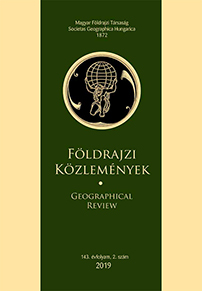Health Inequality, Accessibility, Spatiality – Some Geographical Aspects in the Health Care of Acute Myocardial Infarction in Hungary
Abstract
Access to health care is one of determinative factors in understanding health inequalities. It is not an easy task to define it, because its conceptualisation and measuring depend on different approaches and socio-economic characteristics. In our three year course research project the main aim is to analyse the Hungarian health inequality and its regional differences related to the role of access to health care. The multi-factorial way in determination of barriers in access to health care means using mixed method with combination of quantitative and qualitative techniques. Acute myocardial infarction is one of non-communicable cardiovascular diseases, which was the example in the case study of our project. This was used to study the connection among accessibility, inequality and spatiality. The primary results of statistical analysis confirm a paradox situation in Hungary based on improving health with increasing inequalities. The most important experiences of making semi-structured interviews with medical stakeholders and patients can discover individual and institutional influencing factors in access to health care. The aim of this paper is to interpret basic theoretical and empirical framework of our research project with its most important results. In addition, many experiences of our examinations are suitable for making proposals for evidence based policy-making.
Copyright (c) 2019 Annamária Uzzoli, Viktor Pál, Szilvia Beke, Attila Bán

This work is licensed under a Creative Commons Attribution-NonCommercial-NoDerivatives 4.0 International License.



